Wake on LAN (WoL) it is a networking feature that IT professionals have been using for years. WoL allows you to remotely wake up a remote computer by means of a “magic” data packet sent from another PC on the network.
The remote PC “listens” for the data packet while in sleep or hibernation mode. If the packet is detected, your PC wakes up. This allows easier access to other Windows machines over a network, which means that you do not need to physically touch the other PC to wake it up and start using it.
If you want enable Wake on LAN in Windows 11, This is what you have to do.
How to enable Wake on LAN in BIOS
To use Wake on LAN in Windows 11, you will have to make sure that your network is configured to allow it.
For example, you will need to make sure that all of your computers are connected to the network via a wired Ethernet connection, as this feature is not compatible with Wi-Fi networks. If you have a PC without an Ethernet port, you will not be able to use the Wake on LAN function from the beginning.
You will need to get a USB 3.0 to RJ45 Gigabit Ethernet LAN adapter (you can also get a USB-C Ethernet adapter). A P2P network is required between computers and the computer that “wakes up” must be in sleep or hibernation mode.
Enabling Wake on LAN in BIOS / UEFI
Before moving to Windows 11, you have to make sure that Wake on LAN is enabled in the PC BIOS or UEFI settings. Normally, you can access the BIOS / UEFI menu by pressing the Delete key or by pressing a function key like F2 or F12 during the boot process.
Next, check the settings in “Power Options” or in the “Advanced” section of the BIOS / UEFI menu and enable the Wake on LAN option. These steps will vary, depending on your PC, so if you’re unsure, check your PC manufacturer’s support documentation.
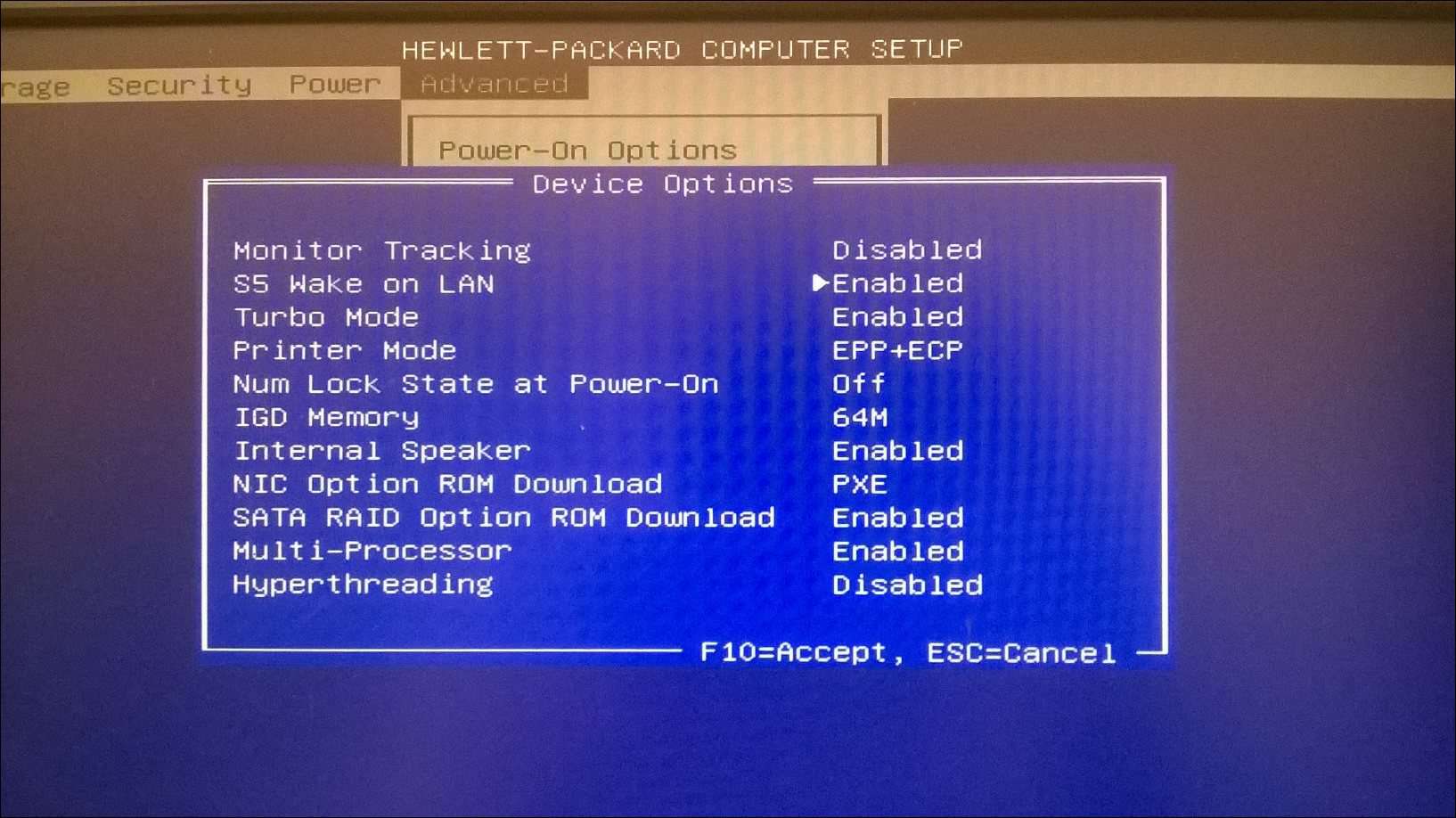
Enabling Wake on LAN in Windows 11
If the BIOS / UEFI settings are configured, you can configure Windows 11 to support the Wake on LAN function.
To do this, right-click the Start button and select Device administrator in the menu that appears.
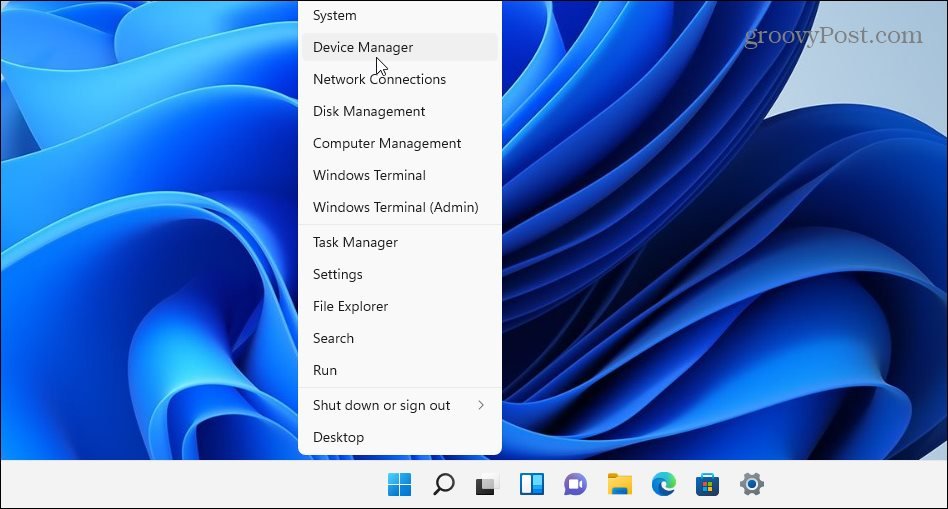
Then scroll down and expand Network adapters in the window of Device administrator. Right-click on the Ethernet adapter and select Properties.
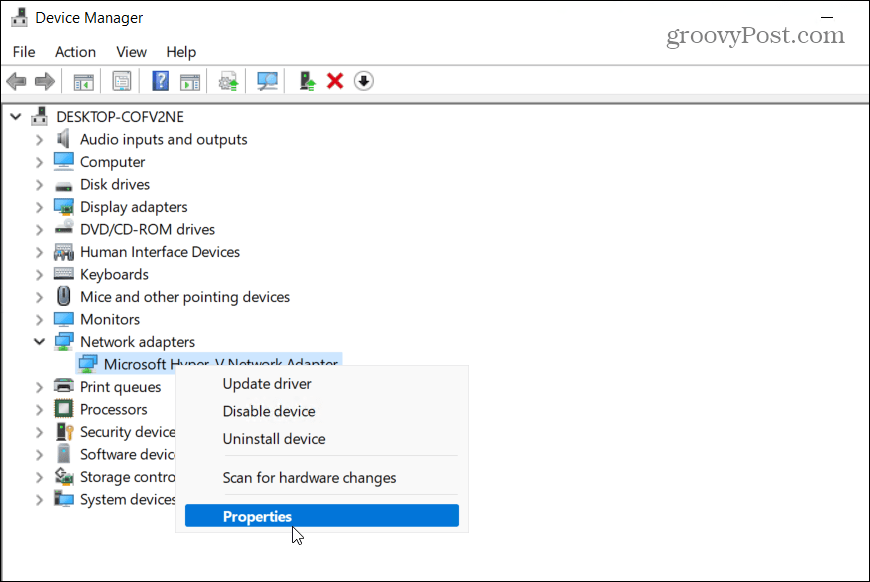
Click on the tab Energy management and be sure to check all available options, including Allow only one magic packet to wake up the computer.
Press okay to save the settings.
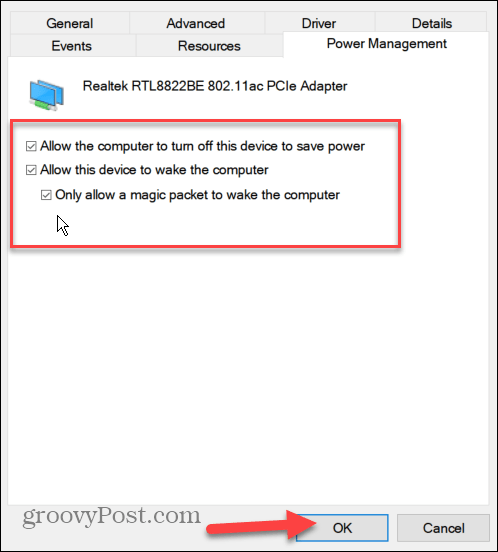
Now, select the tab Advanced in the properties window of the Ethernet adapter.
Scroll down and highlight the option Wake on Magic Packet in option Property, set the box “Value” on Enabled, and click okay.
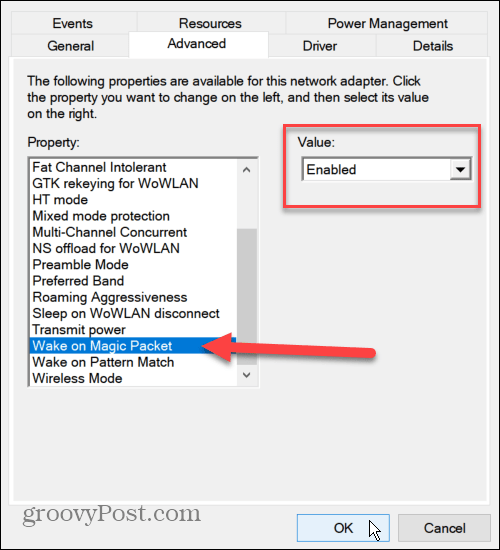
Wake on LAN is now enabled on your PC and you can start using it, but if it doesn’t work, restart your PC first. You will have to verify that your PC is in sleep or hibernate mode for it to work and make sure to connect your PC only via Ethernet.
How to use Wake on LAN in Windows 11
Activating WoL in Windows 11 is just the beginning. Next, you will need a special Wake on LAN tool to send the magic packet to wake up your PC.
There are several free and open source tools for Wake on LAN, including the imaginatively called WakeOnLAN (produced by Aquila Technology. You can also try WakeMeOnLAN (created by NirSoft). For this article, we are using WakeOnLAN, but you are free to use another WoL tool.
Find the MAC address of the remote PC
After downloading and installing the software, you will need to know the MAC address of the remote PC that you want to wake up. You can find it using the command line or PowerShell.
Start either of the two utilities through the Start menu and type ipconfig / all. Scroll through the list of data until you find the Ethernet adapter. The MAC address is the entry for “Physical address”That you will see listed in the results.
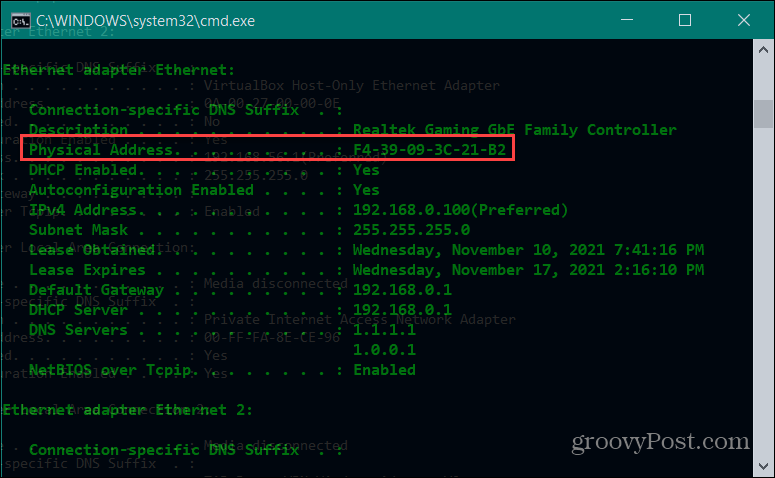
You can also find the MAC address through the settings. Open the Setting via the Start menu, then select Network and Internet> Ethernet.
Scroll down to see the physical address (MAC) listed in the connection information.
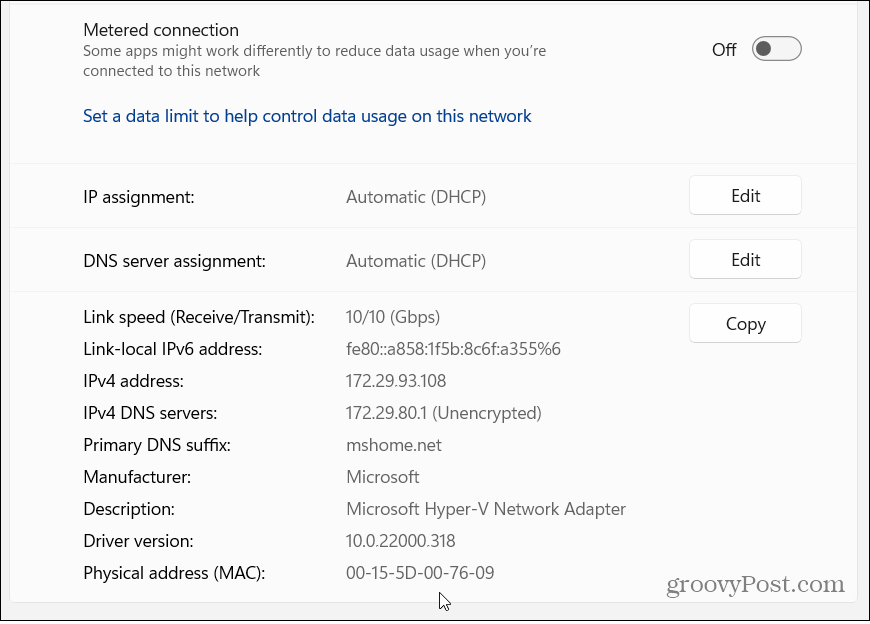
Sending WoL packages with WakeOnLAN
Now that you have the MAC address, you can get started with the WakeOnLan app. Launch the application through Start, then press File> New Host.
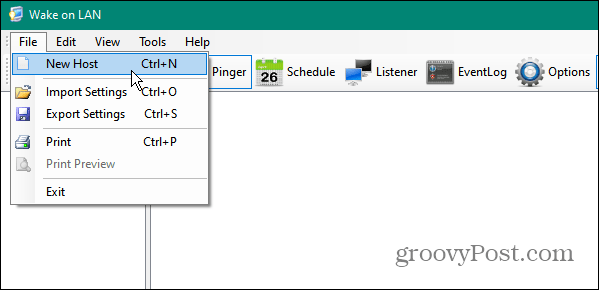
Then enter a name for the machine. You can also provide a group name (to separate the PCs into specific groups) and a descriptive note.
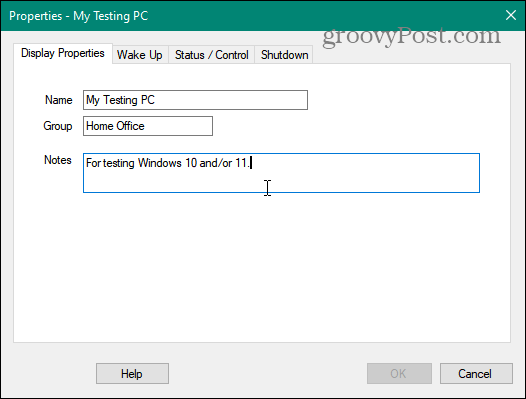
Click on the tab Wake up and write the MAC address on the remote PC, then select the button Broadcast IP.
Leave the field Broadcast as the default entry. In the countryside FQDN / IP, enter the host name of the PC.
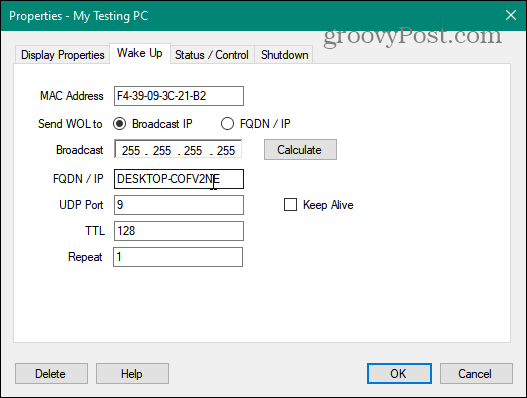
If you need to find the name of the remote PC, press Home> Settings> About. If you have an unusual hostname, you may want to change machine name first.
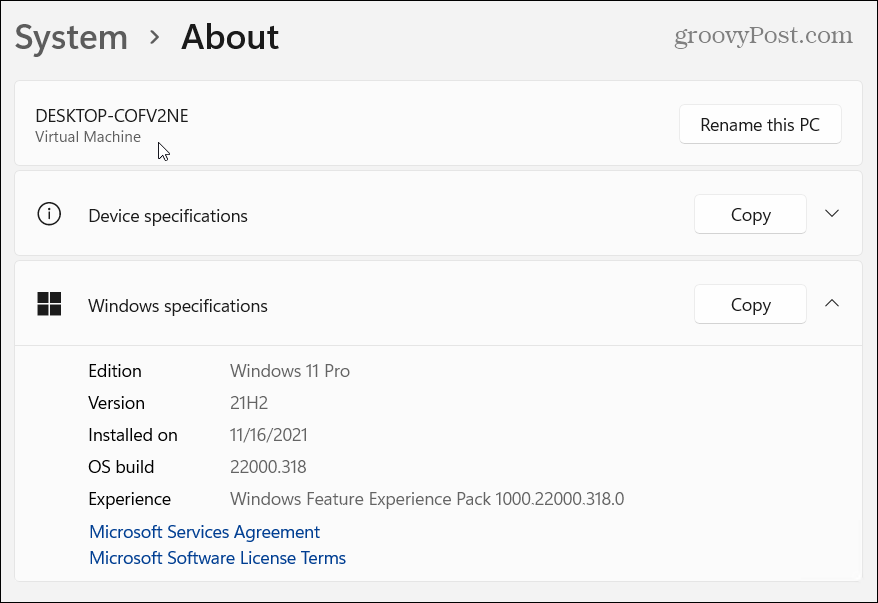
Next, right-click on the remote machine you want to wake up and select “Wake up” on the menu. Once the PC is running, you can use the Remote Desktop (RDP) to connect to him.
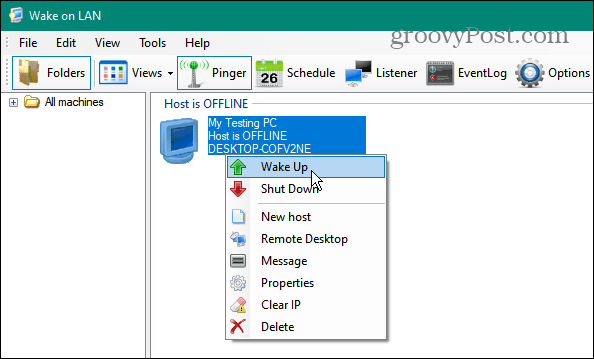
Windows 11 PC Monitoring
If you enable Wake on LAN in Windows 11, you will be able to access and control your PCs remotely. The steps above should get you started, and if you’re using WoL on Windows 10, the steps shouldn’t be much different.
This is also a good way to keep your PCs off, saving money on your energy bills in the process. For more information on Windows 11 networking, take a look at how to set up a metered connection. For better security and a faster web browsing experience on your Windows 11 PC, you may want to change DNS settings next.




